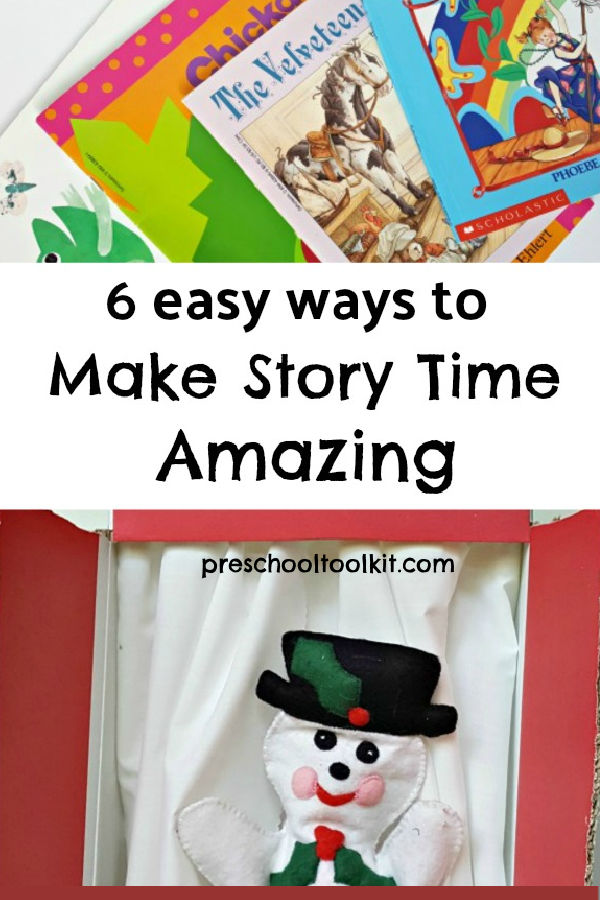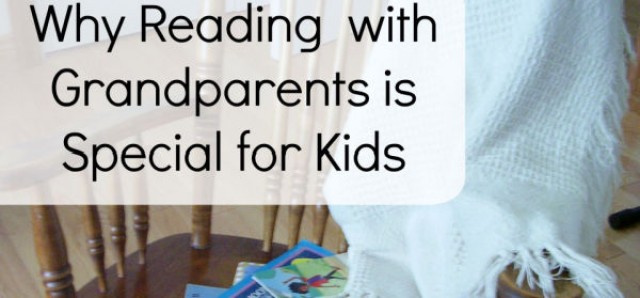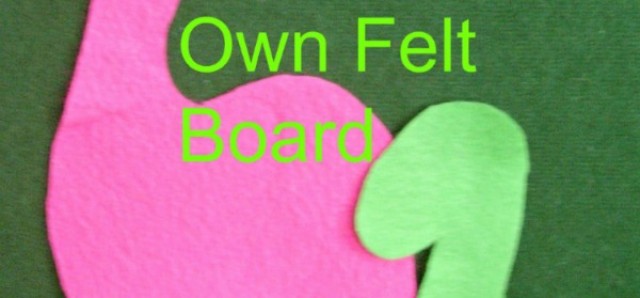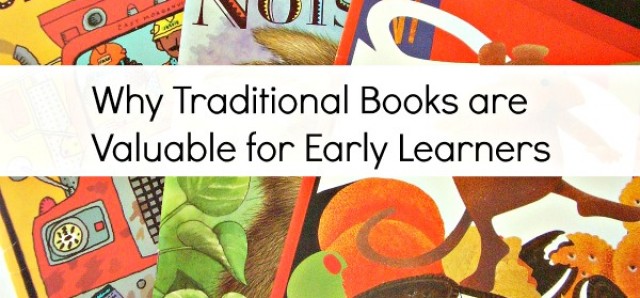How to Make Story Time Amazing
Story times can be more than just opening a book. Engage preschoolers in hands-on activities that promote a love of storytelling. We've got some simple suggestions on how to hold amazing story times.
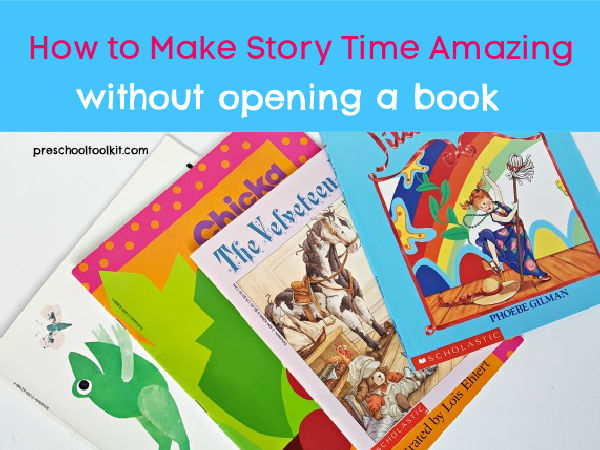
This post contains affiliate links. See our disclosure.
Story time is often a favorite time of day - a time to relax or refocus, to transition, or to enjoy one-on-one or small group reading.
I'll be the first to admit how much I love reading children's books. I love the illustrations and the text. I love the plots or journeys that portray the characters and develop their stories.
While traditional books are still important for enjoyable reading times, as well as for literacy development, there are other methods of engaging in story telling.
The ideas shared in this post will complement, not replace, a book already enjoyed at circle time or bedtime.
(I still recommend reading published books and other reading material to kids in their early years for social, cognitive and language development.)
Stories can be told without opening a book.
Sometimes we want to do more with a story. We want to be creative with the interpretation, or support our understanding of the story.
We can use body movements and voice characterizations to convey the essence of a story.
We can also use various forms of story telling to enrich our awareness and appreciation of stories.
I like to engage kids in the art of story-telling, to help them identify with the characters, and be creative with the dialogue.
Visit our Story Time board on Pinterest!
How to have amazing story times
Opportunities for sharing stories can be realized in many different ways.
The more we imagine, create and verbalize ideas the more we enhance our ability to communicate.
The development of language and communication skills can be supported in creative ways.
Here are a few activities to enhance your everyday story-telling.
1. Role-play
Build houses for the three little pigs with props you have at home or in the classroom.
- Use brooms for the straw house, a cardboard box for the wooden house, blocks for the brick house.
- Kids will role play the characters as they move from house to house.
2. Felt Board
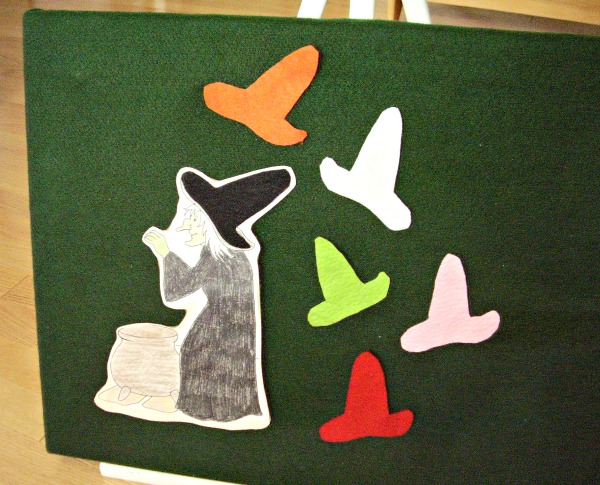
Using a felt board and felt cut-outs allows for hands-on storytelling.
Children take turns placing the pieces on the felt board as the story unfolds.
"The friendly Halloween witch cannot decide what color her new hat should be".
- Place a large mixing bowl in front of the children. Place objects matching the colors of the hats next to the bowl.
- The children match the witch's new hat to the color of the item put into the magic pot. |
For example, if a carrot is stirred into the pot, she tries on an orange hat.
3. Traditional Story with a Playful Twist
Be creative with a story you already know and love.
- The three bears can eat their porridge with chopsticks.
- Instead of Goldilocks arriving at their house, bring a magician into the story who makes the porridge disappear with a wave of a magic wooden-spoon wand !
4. Puppet Show
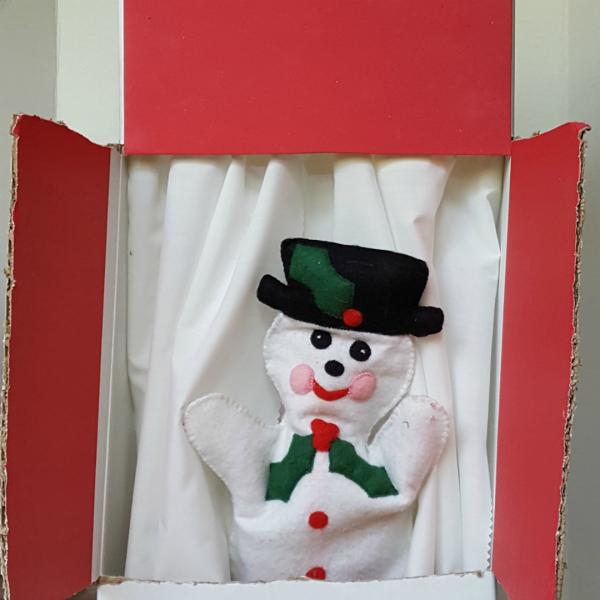
Homemade or store bought puppets inspire creativity and build language skills.
Kids can make puppets with wooden spoons, cardboard shapes or mittens!
Improvise a simple theater by draping a blanket over a table, or position a tension rod inside a door frame and hang a sheet over the rod. You can also make a puppet theater from a cardboard box.
Puppets and Theaters board in Pinterest.
Reenact traditional stories and nursery rhymes, or create new stories to accommodate puppet characters created by the children.
5. Story Prompt
At circle time, display a length of ribbon as you begin to tell a story.
One windy day in March, Georgie decided to fly a kite. He attached a red ribbon to the kite for a tail. The wind gusted so hard (children sway arms back and forth in the air and make wind noises) it blew the ribbon away.
Pass the ribbon around the circle so all the children have an opportunity to add something to the story.
Suggestions for story prompts:
- a little girl ties the ribbon into her hair....the ribbon gets caught in a tree branch and is lost
- a child finds the ribbon and ties it to a toy boat to float on the river....the boat floats away with the ribbon
6. Charades
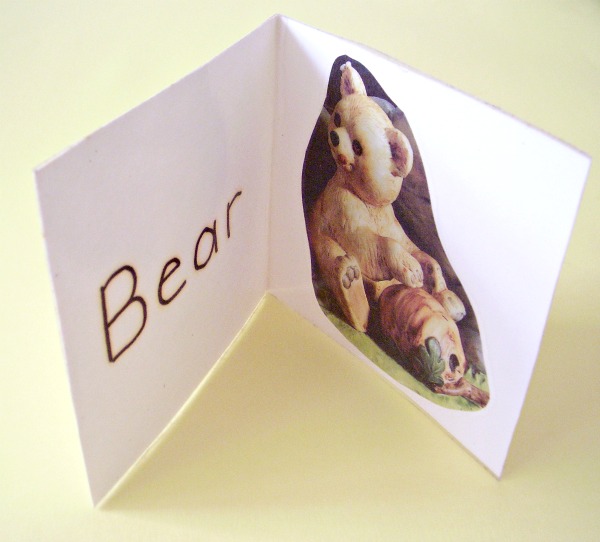
Make a set of cards with simple text and colorful pictures.
Choose a theme such as animals, instruments or weather.
- At circle time, kids take turns drawing a card from the pile and conveying through movements and sounds what is shown on the card.
While not story telling in the usual sense, acting out a scene or character conveys the idea that something is happening, and that actions can illustrate the "plot" as effectively as words.
Free printable charades cards:
Visit these awesome kid-friendly bloggers for themed charade cards you can download.
Animals from Buggy and Buddy
Fairy Tales from Childhood 101
Halloween from The Joys of Boys
Summer Olympics from Toddler Approved
We can influence the importance of literacy with simple hands-on story-telling activities.
Engage kids with a variety of options for story telling during playtimes.
Reading and role-playing in the early years will benefit the development of language skills for the future.
